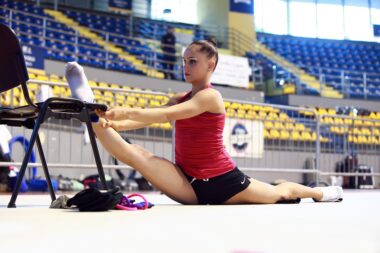Periodization Strategies Overview
Periodization refers to the systematic planning of athletic training aimed at maximizing performance while minimizing injury. By organizing training into phases, coaches can tailor programs to meet the needs of individual athletes. Each phase focuses on specific physiological adaptations. In essence, the essence of periodization lies in understanding the adaptation process in response to training stimuli. This approach helps in developing various aspects such as strength, endurance, and flexibility optimally. Traditional periodization often follows a linear structure, focusing on gradual increases in intensity and volume. However, contemporary methods involve more undulating and block models that vary stimuli more frequently. Applying periodization effectively allows for recovery times and peak performance during competitions. By recognizing each athlete’s unique needs, trainers can implement adaptable strategies that take into account their specific goals. This will lead to an improvement in performance, reduced risk of overtraining, and higher overall satisfaction among athletes. Athletes can maintain motivation and a sense of progress, which are crucial factors in a long-term training plan. Thus, integrating periodization into athletic programs is vital for achieving optimal results across diverse sports disciplines.
The importance of planning in athletic training cannot be overstated. Periodization enables structured progression in an athlete’s training regime, ensuring that they peak at the right time. To create an effective periodization plan, clear goals should be established for each training cycle. These goals can vary depending on an athlete’s upcoming competition schedule or specific performance targets. Additionally, assessing an athlete’s current fitness level is crucial. Such assessments help trainers to identify the most appropriate starting point for their training. An effective periodization model includes the manipulation of training variables such as intensity, volume, and frequency. Varying these factors can significantly enhance adaptations and prevent plateauing. In implementing these strategies, coaches can utilize specific training techniques, including strength training, plyometrics, and speed work. It’s crucial for athletes to incorporate adequate recovery time into their schedules. Recovery days are essential for allowing muscles to repair and adapt. Failure to do so risks overtraining and subsequent injuries. Moreover, proper nutrition and hydration strategies should synergize with training to optimize performance outcomes. Hence, meticulous planning is vital to the success of a periodization strategy in athletic programs.
Linear vs. Non-linear Periodization
Linear periodization is a traditional method where intensity increases while volume decreases gradually over time. This approach is effective for beginners needing clear progression in their training. As athletes advance, non-linear periodization becomes valuable. It entails varying training loads on a weekly or daily basis, thus preventing stagnation in adaptations. By alternating between high and low-intensity training sessions, athletes can optimize their performance throughout a training cycle. For instance, implementing a block model allows for concentrated phases targeting specific skills or attributes. Coaches can shift focus as needed for competitions, aligning training with performance timelines. This flexibility ensures peak performance without overloading the athlete during a prolonged training period. Furthermore, studies suggest that non-linear models can increase motivation and commitment among athletes. By experiencing varied workouts, athletes might find training sessions less monotonous, promoting better engagement. However, it is essential that such models are tailored to each athlete’s needs, ensuring that training remains effective. To achieve this, consistent communication between athletes and coaches is key. Collaboratively adjusting training strategies can lead to optimal outcomes and sustained athletic development over time.
In addition to physical demands, psychological factors play a significant role in athletic training. As athletes progress through different phases of their training, they may encounter various motivational barriers. Understanding periodization contributes to providing athletes with the mental framework necessary to tackle these challenges. As they experience gradual advances, athletes can build self-efficacy and confidence in their skills. Incorporating mental preparation techniques such as visualization and goal-setting can further enhance training effectiveness. These techniques help athletes focus on specific performance outcomes rather than solely on training volume or intensity. Coaches should encourage regular self-assessment and reflection on training experiences to foster adaptability. This ongoing dialogue can help athletes remain committed to their long-term goals. Additionally, recognizing the need for balance between training, recovery, and mental health is vital for sustained success. A well-rounded approach to athletic training emphasizes not only physical development but also emotional resilience. This balance, ultimately, enhances athletes’ ability to handle pressure during competitions. Consequently, a comprehensive understanding of periodization should integrate psychological strategies, creating a holistic model that promotes both physical and mental excellence in athletes.
Common Mistakes in Periodization
Implementing periodization effectively in athletic programs can be challenging, and several common mistakes can hinder progress. One prevalent issue is neglecting individual differences among athletes. Each athlete has unique responses to training stimuli and recovery needs. Failing to account for these differences can lead to overtraining or insufficient adaptation. Additionally, poor communication between athletes and coaches can result in misaligned expectations and ineffective training strategies. Coaches should regularly check in with athletes about their experiences and feelings regarding workload. Another common mistake arises from a lack of flexibility within the training plan. Sticking too rigidly to a predetermined schedule may prevent adjustments needed based on athlete feedback or emerging performance requirements. It’s crucial for coaches to remain responsive and adaptive in their programming. Additionally, many trainers overlook the importance of incorporating restorative practices such as flexibility training, active recovery, and psychological support. Neglecting these aspects can negatively affect overall training effectiveness. Being aware of these pitfalls and proactively addressing them can enhance the outcomes of periodization models in athletic training programs for athletes of all levels.
Monitoring the effectiveness of periodization strategies is essential for ongoing athletic development. Utilizing tools such as performance assessments, feedback sessions, and training diaries can facilitate this process. These resources help track progress and identify areas for improvement. Regularly evaluating training outcomes enables coaches to make informed decisions regarding future training plans. For instance, tracking performance metrics like speed, strength, or endurance can help quantify improvements over time. Additionally, incorporating technology such as wearable devices offers insights into training intensity and recovery status. Coaches can assess athlete workload and optimize training sessions based on these metrics. Furthermore, fostering a culture of continuous improvement within training environments can enhance motivation and athlete engagement. By promoting exploration and experimentation in exercise programming, coaches encourage athletes to take ownership of their training process. Regularly revisiting training goals in line with performance outcomes can maintain focus and commitment. Thus, combining systematic tracking with a supportive coaching environment maximizes the effectiveness of periodization strategies, ensuring athletes continue to strive for excellence and achieve their fullest potential in sports.
Conclusion
Periodization strategies form an integral part of athletic training programs, shaping the development of well-rounded athletes. By effectively manipulating training variables and aligning goals with individual needs, coaches can maximize athletes’ adaptations to physical and mental demands. Emphasizing the importance of planning, flexibility, and continuous monitoring lays the foundation for optimal performance. Furthermore, integrating psychological considerations ensures a comprehensive approach to training, addressing both physical and mental facets. As sport continually evolves, so should training methodologies. Coaches must stay informed about current best practices within the field of sports science. By embracing innovative periodization strategies, trainers can enhance athletes’ resilience and adaptability throughout their careers. Such practices not only yield performance results but also promote overall athlete wellbeing. Engaging in open communication ensures that training remains relevant and meaningful for athletes. Lastly, recognizing the diverse nature of athletic pursuits encourages personalized approaches to training, which ultimately drive success at various competitive levels. Continued research and implementation of these strategies make periodization an essential element in fostering athletic excellence across disciplines.
By understanding the core elements of periodization strategies, coaches and athletes alike can navigate the complexities of training more effectively. This journey leads to improved performance, greater satisfaction, and prolonged participation in sports. The commitment to the principles underlying periodization will undoubtedly enhance athletic training and outcomes in meaningful ways. Research continues to support its benefits, illustrating how planned adaptation ultimately enriches the training experience for all involved.





